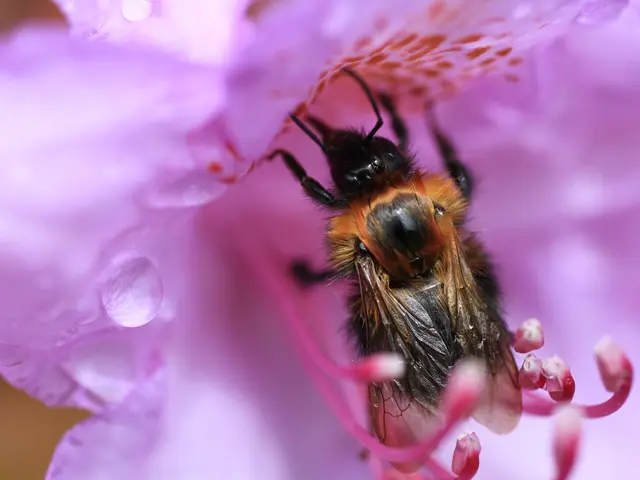Transforming tomato plants into aggressive, verdant, pest-eradicating devices through silicon.
Tomato Plants: Si-Fueled Defense against Pesky Pests
In the world beyond computer chips, silicon powers a complex defense mechanism in tomato plants. This system could help farmers reduce their dependency on pesticides, aiding in the fight against the billion-dollar-devouring South American tomato pinworm (Tuta absoluta).
These pinworms, or tomato leaf miners, have wreaked havoc on tomatoes on four continents, causing significant damage, particularly for small-scale farmers in Africa. According to Baldwyn Torto, a chemical ecologist at the International Centre of Insect Physiology and Ecology in Nairobi, Kenya, these pests have developed resistance to widely used chemical pesticides, making new solutions a necessity.
Research conducted by Torto, Fathiya Khamis, and their colleagues reveals that adding silicon to soil fortifies tomatoes' defenses against these leaf miners. Intriguingly, tomatoes use silicon to create a sophisticated biochemical and genetic defense system. Their recent study, published in the March 24 edition of Proceedings of the National Academy of Sciences, delves into the specifics of this transformation, turning tomatoes into lethal weapons against the tomato pinworm.
When silicon-containing nanoparticles were added to the soil and exposed to pinworm moths, tomato stems produced a mysterious darkened substance at the base of trichomes. This sticky substance seemed to attract pinworm mothers to lay their eggs more frequently on tomato stems, rather than on the leaves. When the pinworm caterpillars hatched and consumed this "larval toffee," many did not survive.
Analyzing the gooey substance, the researchers found a blend of sugars and wax, which appeared enticingly sweet to the pinworms but contained the incorrect nutritional profile to support their growth. Moreover, this plant concoction altered the caterpillar's microbiome, and the subsequent pinworm droppings attracted two different species of insect predators.
Further investigation is needed to confirm silicon's role in this response. Plant pathologist Lawrence Datnoff of Louisiana State University suggests that understanding how and where tomatoes accumulate silicon would be crucial to confirming its significance in this context. Despite this, Datnoff, who was not involved in the study, remains an enthusiastic advocate for using silicon to manage plant health.
The researchers believe that this study signifies the beginning of testing various silicon formulations to optimize crop yield and pest resistance. The potential benefits stretch beyond tomatoes, as these findings could be applicable to other similar insects. As Torto puts it, "This is good for the farmer. You are essentially enhancing biological control of the pests."
Silicon's potential to bolster tomato plant defenses can significantly reduce pesticide use in farming by promoting integrated pest management strategies, improving crop resilience, and offering a safer alternative to chemical pesticides for both the environment and human health.
- In the realm of ecology and policy, reducing pesticide dependency through silicon-enhanced tomato defenses could be a crucial step in the ongoing battle against climate change.
- The health of tomato crops and farmers alike can benefit from scientific research uncovering natural defenses, such as the silicon-powered system discovered in tomato plants.
- As the environment faces numerous threats, including climate change, the application of science and medicine in agriculture could lead to improved health-and-wellness outcomes for both plants and the people who rely on them.
- In the spirit of fitness-and-exercise, exploring the potential of silicon in crop defense might enable us to expand our understanding of the intricate relationships within the environment, much like how physical exercise expands our understanding of our own bodies.
- The space for research in this area is vast, with this silicon-based defense mechanism potentially offering benefits not only in the agricultural sector but also in other areas where pests pose threats, such as medicine and health-and-wellness.
- By fostering integrated pest management strategies that rely on natural defenses, like the silicon-powered system in tomato plants, we can promote a healthier planet, protect our ailing environment, and pave the way for sustainable living.







